#giambattista basile
Text
Symbolisms in the world of fairy tales: the forest
Forests have often been the basis of a fairy tale. And we've already said that the forest is not just the forest. In all fairy tales ,and strangely enough in almost all the world, the forest represents the same thing, life.
Take Little Red Riding Hood, it's the reason why she has to go through the forest to get to her grandmother and meets the wolf.

It's the reason why in almost every story children get lost in the forest. Thumbelina gets lost in the forest, Hansel and Gretel get lost in the forest, Snow White gets lost in the forest, Rapunzel is hidden in the forest. Sleeping Beauty in Basile's version is asleep in the woods.
it's always the forest. This is because, once upon a time, when we were not yet very "civilized", one thing that was really done was tests to pass. In tribal times, we sent our children into the forest with a task: you get a bow and arrow and you have to come back, for example, with a wild boar. (or at least a dead animal). You had to go hunting. And if you come back with a dead animal, they would say "Enough , you have grown". Like the Spartans, for example. Over time this has evolved, and has become more and more symbolic. Little by little it transformed into something, first symbolic, then, even, into a story. The story of when, once upon a time, children had to face the forest alone. To prepare them for life with these stories.

One of the most beautiful examples is this buddist tale. The Siddharta (Buddah) was this child who lived completely peacefully in this family ,so wealthy and so powerful, that it allowed him to keep the world hidden from him. He spends his whole life without ever seeing reality.Everyone inside the building is not allowed to grow old,and if they get old,they are fired.Everyone was not allowed to have disabilities,otherwise they are thrown out. If you lose an eye you are canceled,you can no longer work there. If you have a cut you cannot show up at work, and you cannot cut yourself at work! The blood must never be shown to the child,and neither should violence. And so the child grows up seeing people all young (or at least adults)all beautiful all good all good, and he never sees anything wrong. everything is rich everyone is well off. One day ,while he is being taken inside a carriage from point A to point B, halfway ther's a problem with the carriage.He has the opportunity to peek out the window ,and sees the people outside. the people are made up of old people, beggars, the starving, the sick.
And he had never seen this before... and was shocked. After his encounter with suffering, Siddhartha left his palace and his family at night, and shed his noble clothes to dress poorly.
This is just the beginning of the WHOLE Siddharta's story, hope I explained it well so far♡
#fairy tales#red riding hood#snow white and the seven dwarfs#thumbelina#hansel and gretel#rapunzel#sleeping beauty#Giambattista Basile#spartan#tribal times#siddhartha#buddism#buddah#symbolism#fun facts#spilling facts
19 notes
·
View notes
Text



༻✦༺ Petrosinello ༻✦༺
A gay reimagining of "Petrosinella" (a Rapunzel's variant) featuring Emanuele Mariotti as Petrosinello (Rapunzel's counterpart), Alberto Malanchino as the Prince and Pierfrancesco Favino as the Ogre (Mother Gothel, basically).
✧・゚: ✧・゚: :・゚✧:・゚✧✧・゚: ✧・゚: :・゚✧:・゚✧✧・゚: ✧・゚: :・゚✧:・゚✧ :・゚✧:・゚
"Petrosinella" (Little Parsley) was written in Neapolitan by Giambattista Basile and he included it in his 1634 collection of fairy tales "The Tale of Tales." It is an Aarne–Thompson type 310 "the Maiden in the Tower" tale, as well as the earliest recorded variant of "Rapunzel." The Brothers Grimm's more famous version was published almost two centuries later, in 1812.
You can read an English translation of "Petrosinella" here.
✧・゚: ✧・゚: :・゚✧:・゚✧✧・゚: ✧・゚: :・゚✧:・゚✧✧・゚: ✧・゚: :・゚✧:・゚✧ :・゚✧:・゚
Here you can find the whole list of my Gay Tales!
#fairy tales#gay fairy tales#gay tales#petrosinello#petrosinella#giambattista basile#the tale of tales#lo cunto de li cunti#pentamerone#rapunzel#brothers grimm#emanuele mariotti#alberto malanchino#alberto boubakar malanchino#pierfrancesco favino#moodboard#aesthetics
26 notes
·
View notes
Text
I recently finished reading "The Tale of Tales" by Giambattista Basile, and this part from the moral introduction of the sixth story on the fifth day is still stuck in my head, because DAMN.
"There are three species of idiots in the world, each of which deserves more than the other to be put in the oven: the first is those who do not know, the second is those who do not want to know, and the third those who think they know. The idiot about whom I am to talk to you is of the second species, who does not want knowledge to enter his noggin and thus hates those who teach it to him, trying, like a modern-day Nero, to cut off their bread supply."
5 notes
·
View notes
Text



11 notes
·
View notes
Note
read any good books lately?
Giambattista Basile’s Pentamerone (also known as The Tale of Tales), which is a delightfully playful and unabashedly lewd XVII century collection of Neapolitan fairy tales

3 notes
·
View notes
Text
So I’m writing a The Months (Basile)/Mother Hulda (Grimm) story that’s mixed with The Shoes that Were Danced to Pieces.
Twelve Princesses find a portal to a magic world and dance every night with Twelve Princes. The Princesses are each named after their birth flower from January to December
I’m not sure if I want the Month that each princess dances with to match her birth month, or if I want the Months to go in order of age with March being the youngest and February being the oldest like in the Slovak version.
#the twelve months#the months#giambattista basile#fairytale#the twelve dancing princesses#the shoes that were danced to pieces#the worn out dancing shoes#Grimm#Grimm brothers#mother Hulda#frau Holle#brainstorming#writing#novel writing#docena
24 notes
·
View notes
Text

Today fairytale has a long background. So bear with me.
The tale is about two siblings abandoned in a forest. And there are differents tales with variations but all of them have the two siblings in the forest.
So you have Hansel and Gretel from the 1812 and Nennillo and Nennella (17th century) and a romanian tale the little boy and the wicked stepmother wich is the oldest.
And I could not pick one so this drawing is all of them at the same time.
#Fairy tales#nennillo and nennella#hansel and gretel#the little boy and the wicked stepmother#giambattista basile#brothers grimm#fairy tale#ink#gouache
24 notes
·
View notes
Text



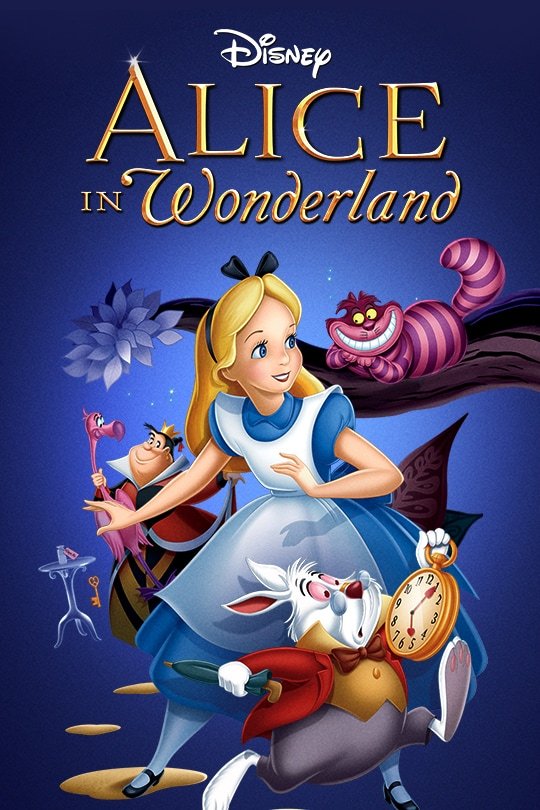

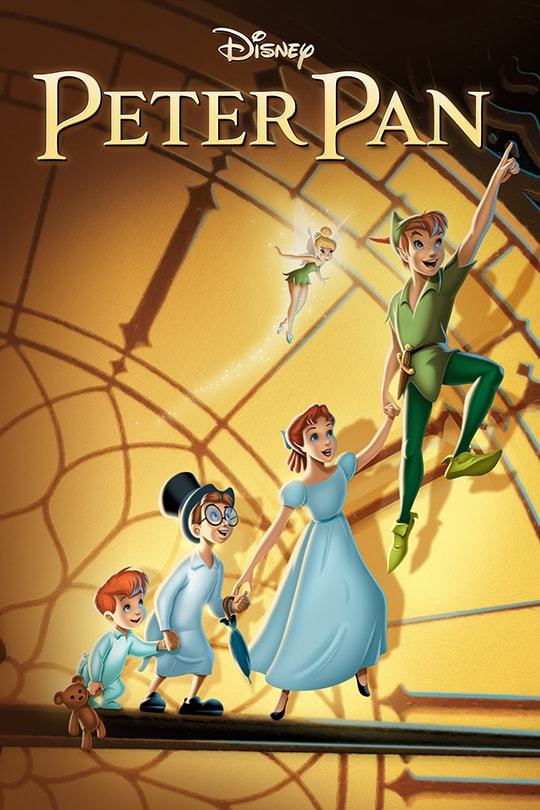

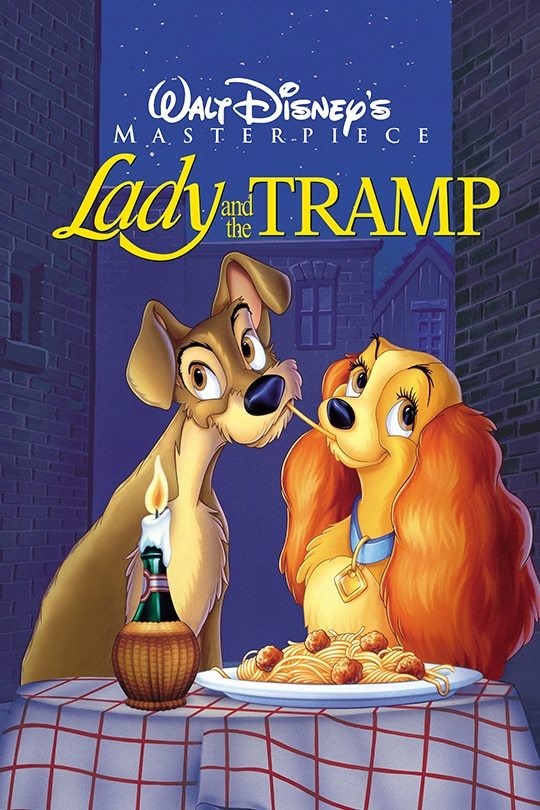


#disney#cinderella#charles perrault#alice in wonderland#lewis carroll#peter pan#j. m. barrie#lady and the tramp#ward greene#sleeping beauty#giambattista basile
12 notes
·
View notes
Note
In Nicholas Jubber's The Fairy Tellers, he discusses Giambattista Basile's ogres as creatures with a unique ability to see things as they are. They seem less monstrous than practical. He cites the political awareness of one and the ability of the ogre in The Flea to identify the titular flea. Interestingly, I noticed that this ogre is cheated of his promised spoils in a way not dissimilar to Princess Zoza in the frame story, and thus aligned with the heroine.
What are your thoughts on this ambiguous morality of Basile's ogres?
As a prelimenary note I do remind that I am not at all an expert on Basile and do not have the same in-depth knowledge of his fairytales as I have of Perrault and d'Aulnoy's, so my answer will be the one of a novice.
It is true that, from my readings, some ogres have this ability to know what things "truly are" - the guessing of the flea-skin, for example (which actually seems to be due to the ogre's smell since he sniffs it before answering - we have the precursor of ogres smelling human meat here), or how whenever a child of the ogre helps magically a victim (The Dove, The Golden Root) the ogre-parent knows who did the chore... But to turn this into one of the defining abilities of the ogre seems a bit stretched to be? Because in many tales, the ogres also show themselves to be unable to see things for what they are... In Violet/Viola the ogre mistakes a grown-up girl for his daughter out of a scatological joke. The blind-ogre of "The Seven Doves", while recognizing the voice of the girl as a girl, is then fooled by her brothers. The ogers of Corvetto are unable to see the obvious traps the hero prepares for them. The whole "vow of the ogre" motif precisely happens because the ogres do not know or cannot tell who is or where is the person that made for them somptuous meals or beautiful gifts... When ogres have such great knowledge of things, it is usually out of magical powers - such as the ogre of "The Story of the Ogre" who is spelled out to have a prescience due to his sorcerous abilities...
The topic of "seeing things as they really are" is however very present in Basile's ogre-tales ; and while the ogres might not be the ones who always see things for what they are - it is definitively important to see past appearances with them. Whenever a hero ends up rewarded by an ogre, it is because they saw past the ogre's hideous appearance and were polite with them, without fear or disgust (The Story of the Ogre ; The Three Fairies), and the shapeshifting ogre of "The Enchanted Doe" uses appearances against his victims. But again, this game of appearances is what causes one ogress' downfall - the ogress of Petrosinella is devoured by a wolf that mistakes her for a donkey...
All in all I do think this is a more complex and nuanced topic than what it might appear - but one thing that cannot be denied is that, indeed, the presence of the "game of appearances" is intentional on Basile's part and does tie into the over-arching themes of the framing story, which itself relies on disguises and treachery of appearances, and learning to see beyond appearances (which is also quite funny in a meta-literary way since it is a big old racist story...).
In fact, there is a clear evolution among the "ogre tales", that start out in the beginning of the Pentamerone with very-male oriented stories (the First Day has three ogre-tales, each with a male ogre as a villain), but slowly shifts into female focused tales (the ogre-tales of the Fifth Day are stuffed with ogresses everywhere, including the most expensive tale of The Golden Root with a total of nine ogresses forming one expensive clan, ten if you include the dead baby). This shift over the course of the book is clearly meant to evoke how the tales are slowly getting closer and closer to the conclusion of the over-arching story, how the fairytales become less symbolic and more direct illustrations of the frame-narrative. This is notably why the Golden Root literaly has the various elements of the frame-story (a maiden who has to obtain the heart and hand in marriage of her beloved, only to be opposed by wicked, ugly rival brides and negative, destructive female forces...).
But to identify the ogres as Zoza would be... wrong I guess? I don't think the ogre from the Flea is supposed to be Zoza, especially since he is clearly depicted as the villain of the story. If I had to make a guess, he rather is a metaphor for the "bad wedding", "the "wrong marriage" - and he would rather be a metaphor for the slave-bride, that tricks the prince/maiden into becoming their spouse. After all, the ogre does win the hand of the maiden out of a challenge imposed by an outer will (the father's skin-guessing game), the same way the marriage of the frame-story relies on a magical challenge (filling the jug with tears).
As for the moral ambiguity of the ogres, I do think it is because in the Italian folktales and imagination of the time, ogres were much closer to the concept we know of as "far folk". The orco/uerco clearly fills the job that was later taken over by witches, sorcerers and fairies ; and as I pointed out are considered as equivalent or relatives of fairies in Basile's own tales... The most obvious example would be Petrosinella, who "cousin tales" replace the ogress with a fairy or a witch ; similarly the backstory of the prince in "The Serpent" is a typical curse usually given by witches and fairies... So I do think this ambiguous morality is due to the very "fairy" nature of the orco/uerco, who are clearly denizens of the supernatural realm and inhuman beings, thus of alien mindset, hard to fit with human standards (which would explain why ogres never seem to be fully good - except maybe for the ogre of The Story of an Ogre, I love this guy).
After that, tales have to be taken one by one, and a case comes to my mind: "The Green Meadow/The Crystal Tunnel", this tale where I found so many different translated titles. In it we do have the most obvious example of an "ogre who sees things as they are" - since the ogre in this story keeps complaining and listing all the problems of societies, and ills of the world, and denounces the vices and flaws of our humanity works - plus he has an immense knowledge of medicine and healing, and keeps the secrets to heal enchanted wounds... But at the same time, the ogre and his wife are also clear hypocrites who do not practice what they preach, are just as wicked as the humans they denounce, and their immense knowledge is blind to the fact the so-called beggar in front of them is a woman in disguise with the intent to murder them... And this whole thing plays in the satirical and humoristic nature of the tale (because we have to constantly remember that the Pentamerone, like the Facetious Nights, was primarily an humoristic, comical work with the intent to make people laugh or smile).
But yes, the moral ambiguity of Basile's uercos is something that needs to be noticed, especially since it shows the clear evolution of the "ogre figure", from a dangerous but sometimes helpful entity in Italian fairytales, to the pure villain it is in French ones, as numerous roles of the "orco" get taken over by fairies, good or wicked, and witches/enchanters.
6 notes
·
View notes
Text
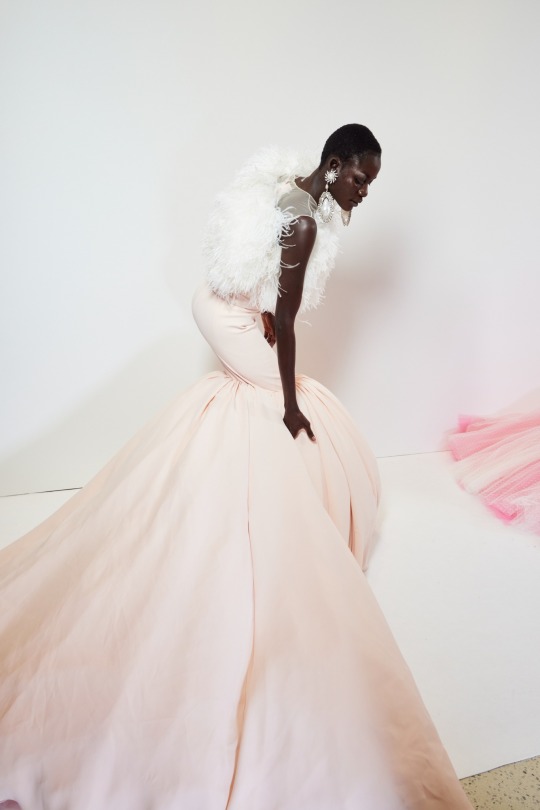
Giambattista Valli Spring Couture 2023
#giambattista basile#gown#dress#white gown#white dress#earrings#beauty#catwalk#models#runway#style#fashion#model#outfit#pretty#girl#ss23#collection#paris#haute couture#couture#pfw#paris fashion week#backstage#backstage beauty#high fashion
6 notes
·
View notes
Text
Chi non cammina non vede; chi non vede non impara; chi si perde impara a ritrovarsi..
Giambattista Basile
17 notes
·
View notes
Text
THE YOUNG SLAVE
(Italy, Giambattista Basile, Il Pentamerone)
Lisa is born from a rose-leaf, and dieth through a fairy's curse; her mother layeth her in a chamber and biddeth her brother not to open the door. But his wife being very jealous, wishing to see what is shut therein, openeth the door, and findeth Lisa well and alive, and attiring her in slave raiments, treateth her with cruelty. Lisa being at last recognised by her uncle, he sendeth his wife home to her relations, and giveth his niece in marriage.
@softlytowardthesun @themousefromfantasyland @princesssarisa
In days of yore, and in times long gone before, there lived a baron of Serva-Scura, and he had a young sister, a damsel of uncommon beauty, who often fared to the gardens in company of other young damsels of her age. One day of the days they went as usual, and beheld a rose-tree which had a beautiful fully opened rose upon it, and they agreed to wager that whosoever should jump clear above the tree without damaging the rose would win so much. Then the damsels began to jump one after the other, but none could clear the tree; till it coming to Cilia's turn (thus was the baron's sister hight), she took a little longer distance, and ran quickly, and jumped, and cleared the tree without touching the rose, and only a single leaf fell to the ground. She quickly picked it up, and swallowed it before any of the others perceived aught, and thus won the wager.
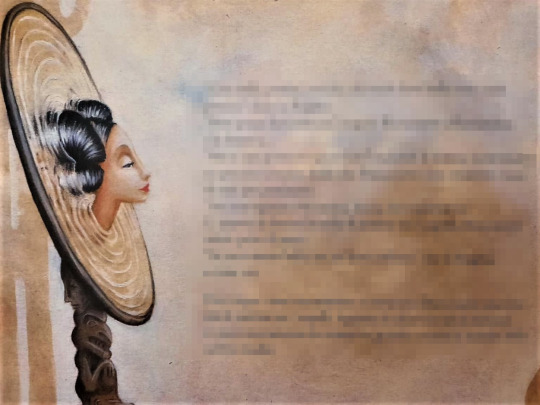
Three days had hardly passed, when she felt that she was with child, and finding that such was the case she nearly died with grief, well wotting that she had done naught to bring such a catastrophe upon her, and she could not suppose in any way how this had occurred. Therefore she ran to the house of some fairies, her friends, and relating to them her case, they told her that there was no doubt but that she was with child of the leaf she had swallowed.

Cilia hearing this hid her state as long as it was possible, but the time came at length for her delivery, and she gave birth secretly to a beauteous woman-child, her face like a moon in her fourteenth night, and she named her Lisa, and sent her to the fairies to be brought up. Now each of the fairies gave to the child a charm; but the last of them, wanting to run and see her, in so doing twisted the foot, and for the anguish of pain she felt cursed her, saying that when she should reach her seventh year, her mother in combing her hair would forget the comb sticking in the hair on her head, and this would cause her to die. And years went by till the time came, and the mishap took place, and the wretched mother was in despair at this great misfortune, and after weeping and wailing, ordered seven crystal chests one within the other, and had her child put within them, and then the chest was laid in a distant chamber in the palace; and she kept the key in her pocket.
But daily after this her health failed, her cark and care bringing her to the last step of her life; and when she felt her end drawing near, she sent for her brother, and said to him, "O my brother, I feel death slowly and surely come upon me, therefore I leave to thee all my belongings. Be thou the only lord and master; only must thou take a solemn oath that thou wilt never open the furtherest chamber in this palace, of which I consign to thee the key, which thou wilt keep within thy desk."

Her brother, who loved her dearly, gave her the required promise, and she bade him farewell and died.
After a year had passed the baron took to himself a wife, and being one day invited to a hunt by some of his friends, he gave the palace in charge to his wife, begging her not to open the forbidden chamber, whose key was in his desk. But no sooner had he left the palace than dire suspicion entered in her mind, and turned by jealousy, and fired by curiosity (the first dower of womankind), she took the key, and opened the door, and beheld the seven crystal chests, through which she could perceive a beauteous child, lying as it were in a deep sleep. And she had grown as any other child of her age would, and the chests had lengthened with her.
The jealous woman, sighting this charming creature, cried, "Bravo my priest; key in waistband, and ram within; this is the reason why I was so earnestly begged not to open this door, so that I should not behold Mohammed, whom he worshippeth within these chests."
Thus saying, she pulled her out by the hair of her head; and whilst so doing the comb which her mother had left on her head fell off, and she came again to life, and cried out, "O mother mine, O mother mine."
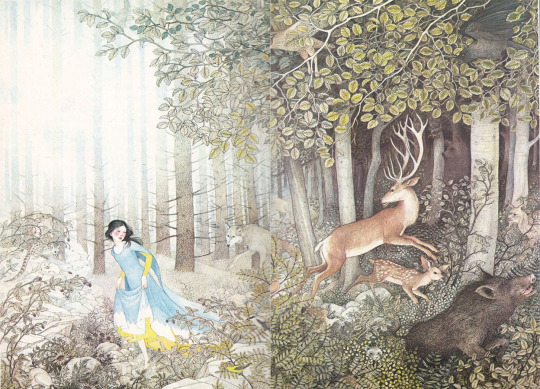
Answered the baroness,"I'll give thee mamma and papa;" and embittered as a slave, and an-angered as a bitch keeping watch on her young, and with poison full as an asp, she at once cut off the damsel's hair, and gave her a good drubbing, and arrayed her in rags. Every day she beat her on her head, and gave her black eyes, and scratched her face and made her mouth to bleed just as if she had eaten raw pigeons.
But when her husband came back and saw this child so badly treated, he asked the reason of such cruelty; and she answered that she was a slave-girl sent her by her aunt, so wicked and perverse that it was necessary to beat her so as to keep her in order.
After a time the baron had occasion to go to a country fair, and he, being a very noble and kind-hearted lord, asked of all his household people from the highest to the lowest not leaving out even the cats, what thing they would like him to bring for them, and one bade him buy one thing, and another another, till at the last he came to the young slave-girl.
But his wife did not act as a Christian should, and said, "Put this slave in the dozen, and let us do all things within the rule, as we all should like to make water in the same pot; leave her alone and let us not fill her with presumption."
But the lord, being by nature kind, would ask the young slave what she should like him to bring her, and she replied, "I should like to have a doll, a knife, and some pumice stone; and if thou shouldst forget it, mayst thou be unable to pass the river which will be in thy way."
And the baron fared forth, and bought all the gifts he had promised to bring, but he forgot that which his niece had bade him bring; and when the lord on his way home came to the river, the river threw up stones, and carried away the trees from the mountain to the shore, and thus cast the basis of fear, and uplifted the wall of wonderment, so that it was impossible for the lord to pass that way; and he at last remembered the curse of the young slave, and turning back, bought her the three things, and then returned home, and gave to each the gifts he had brought. And he gave to Lisa also what pertained to her.
As soon as she had her gifts in her possession, she retired in the kitchen, and putting the doll before her, she began to weep, and wail, and lament, telling that inanimate piece of wood the story of her travails, speaking as she would have done to a living being; and perceiving that the doll answered not, she took up the knife and sharpening it on the pumice stone, said, "If thou wilt not answer me, I shall kill myself, and thus will end the feast;" and the doll swelled up as a bagpipe, and at last answered, "Yes, I did hear thee, I am not deaf."
Now this went on for several days, till one day the baron, who had one of his portraits hung up near the kitchen, heard all this weeping and talking of the young slave-girl, and wanting to see to whom she spake, he put his eye to the keyhole, and beheld Lisa with the doll before her, to whom she related how her mother had jumped over the rose-tree, how she had swallowed the leaf, how herself had been born, how the fairies had each given her a charm, how the youngest fairy had cursed her, how the comb had been left on her head by her mother, how she had been put within seven crystal chests and shut up in a distant chamber, how her mother had died, and how she had left the key to her brother. Then she spoke of his going a-hunting, and the wife's jealousy, how she disobeyed her husband's behest and entered within the chamber, and how she had cut her hair, and how she treated her like a slave and beat her cruelly, and she wept and lamented saying, "Answer me, O my doll; if not, I shall kill myself with this knife;" and sharpening it on the pumice stone, she was going to slay herself, when the baron kicked down the door, and snatched the knife out of her hands, and bade her relate to him the story.
When she had ended, he embraced her as his own niece, and led her out of his palace to the house of a relative, where he commanded that she should be well entreated so that she should become cheerful in mind and healthy of body, as owing to the ill treatment she had endured she had lost all strength and healthful hue. And Lisa, receiving kindly treatment, in a few months became as beautiful as a goddess, and her uncle sent for her to come to his palace, and gave a great banquet in her honour, and presented her to his guests as his niece, and bade Lisa relate to them the story of her past troubles.
Hearing the cruelty with which she had been entreated by his wife, all the guests wept. And he bade his wife return to her family, as for her jealousy and unseemly behaviour she was not worthy to be his mate; and after a time gave to his niece a handsome and worthy husband whom she loved; which touched the level that:
When a man least goods of any kind expecteth,
The heavens will pour upon him every grace.
*This story combines elements of Snow White (type 709) and Sleeping Beauty (type 410) tales.
*Giambattista Basile was born about 1575 in Naples and died 1632 in Giugliano, Campania. His Lo cunto de li cunti (The Story of Stories) was published in 1634, and named Il pentamerone by an editor because of its similarity to Boccaccio's Decamerone. The framework of Lo cunto de li cunti provides a context for ten women to tell one story each every day for five days. The fifty resulting stories, all based on oral tradition, comprise one of the monumental folktale collections of all time.
#fantasy#folklore#fairy tales#literature#the tale of tales#the story of stories#giambattista basile#snow white#sleeping beauty
9 notes
·
View notes
Photo










SELEUSS - L’amour des Trois Oranges
JANUARY 9TH, 2023, SEATTLE, WASHINGTON
We are delighted to announce that our L’amour des Trois Oranges (The Love for 3 Oranges) Chocolate Truffle has been granted the Superior Taste Award with 2-Stars by the International Taste Institute in Brussels for 2023.
The Love for Three Oranges:
Our interpretation of Sergei Prokofiev’s opera; L’amour des Trois Oranges, based on the Italian fairytale by Giambattista Basile in the Pentamerone (Rapunzel, Cinderella...). Made with Clementine, Bergamot and Tangerine, along with organic cream, our favorite honeys and a 53% REGINA™ dark milk chocolate. This batch is enrobed in our MORETTA™ dark chocolate at 76%+ and topped with either granulated Lemon peels, Lemon Ginger Honey Crystals, or occasionally a foot of Chocolate Pailletés Fins.
#seleuss#chocolates#seleusschocolates#theloveforthreeoranges#sergeiprokofiev#lamourdestroisoranges#giambattista basile#pentamerone#chocolatetruffles#seattle#seattlechocolateshop#bestchocolatesinseattle#seattlesbestchocolates#citronmella
1 note
·
View note
Text
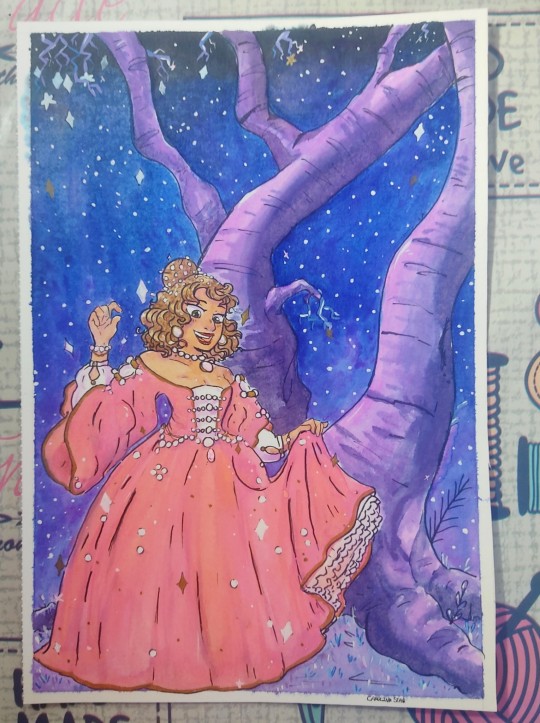
Cat Cinderella by Giambattisa Basile (1634) aka Cinderella.
Fun fact, her name is Zezolla.
Ink and gouache
#fairy tales#cat cinderella#Cinderella#zezolla#princess#magic#fantasy#ink#gouache#giambattista basile
21 notes
·
View notes
Text
7 - L'orco italiano di Basile
7 – L’orco italiano di Basile
youtube
View On WordPress
#amazon#blog#fabrizio valenza#fantasy#Giambattista Basile#Lo cunto de li cunti#orco#Pentamerone#Youtube
0 notes
Note
Hi!
There’s a good chance you are already aware of it, but there is a recent film based on Basile’s Cunto de li Cunti. It’s called Tale of Tales, it’s an italian-french production from 2015, and it adapts (surprisingly very faithfully) the tales of the Flea, the Doe and the Flayed Old Woman.
I figured it could interest you. Keep up the good work!
Thank you!
And indeed I know of this movie! I heard all about it when it got released, the trailer was going around and there were articles in magazines - in fact, it was one of the thing that led me to explore further the Tale of Tales (before that I only/mostly knew about the Facetious Nights).
That being said, despite wanting to watch it at the time, I unfortunately did not had time... and I still haven't watched it fully, which is a shame because it looks so good, and this is one of the rare pieces of media to acknowledge the Italian literary fairytales.
I should definitively try to watch the movie one of these times - thanks for reminding me of its existence X)
4 notes
·
View notes